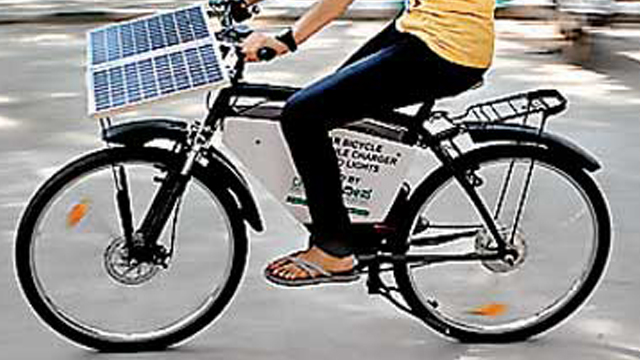Ahaan Parekh, 17-year-old south Mumbai resident, has invented an Eco Solar Bicycle (ESB), which offers three different usage options – solar-powered, battery-powered and manual. This cycle can make life easier for home delivery vendors, such as newspapermen, milkmen, and dabbawalas.
 dna Research & Archives
dna Research & Archives
Ahaan Parekh, 17-year-old south Mumbairesident, has invented an Eco Solar Bicycle (ESB), which offers three different usage options – solar-powered, battery-powered and manual. This cycle can make life easier for home delivery vendors, such as newspapermen, milkmen, and dabbawalas.
The ESB can touch a maximum speed of 20kmph and takes about 5-6 hours to be completely charged under normal sunlight conditions. It also offers the comfort and convenience of getting charged while in use. The project was selected for the All India Nehru Science Center Innovation Festival and Parekh's participation was acknowledged with a trophy. He also impressed as one of the prominent speakers for TEDx, Juhu, in one of their flagship events titled,'Ideas marrying execution'. Parekh have donated five ESBs to dabbawalas.
Parekh, a former student of The Cathedral and John Connon School in Fort, decided to do his International Baccalaureate (sIB) studies from Seven Oaks in the UK, so that he could "experience a different culture and a boarding house".
He said, "I did an internship with a solar energy company last year and also attended some online courses on renewable energy. I was thinking of using solar energy in everyday life. That is when I thought about the solar bicycle. This is my own idea and project, and I started working on it in May 2014, when I had a five-month break. It has been more than a year. I made my first prototype in about four months but kept improving it."
"Primarily, home delivery vendors such as newspaper boys, milkmen, dabbawalas, dhobis and so on can use this bicycle. It will make their work easier and they can earn more by covering more customers. If they stop using mopeds or motorcycles, it will also help in reducing pollution. It will be a good showcase for use of clean energy. The financial part of the project was not substantial, as I used indigenous components readily available in the market," added Parekh.
When asked about the difficulties he faced, Parekh said, "Yes, there were a lot of issues with design and placement of components. The major challenge was to keep the weight low, while maintaining the balance. Also, procurement of components in single quantity and vendors selling the parts without providing detailed specifications made the task difficult."
Source: DNA dated 21 December, 2015



No comments:
Post a Comment
Have a Say?..Note it down below.